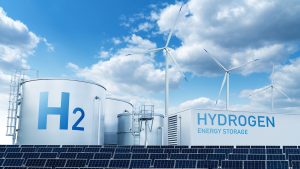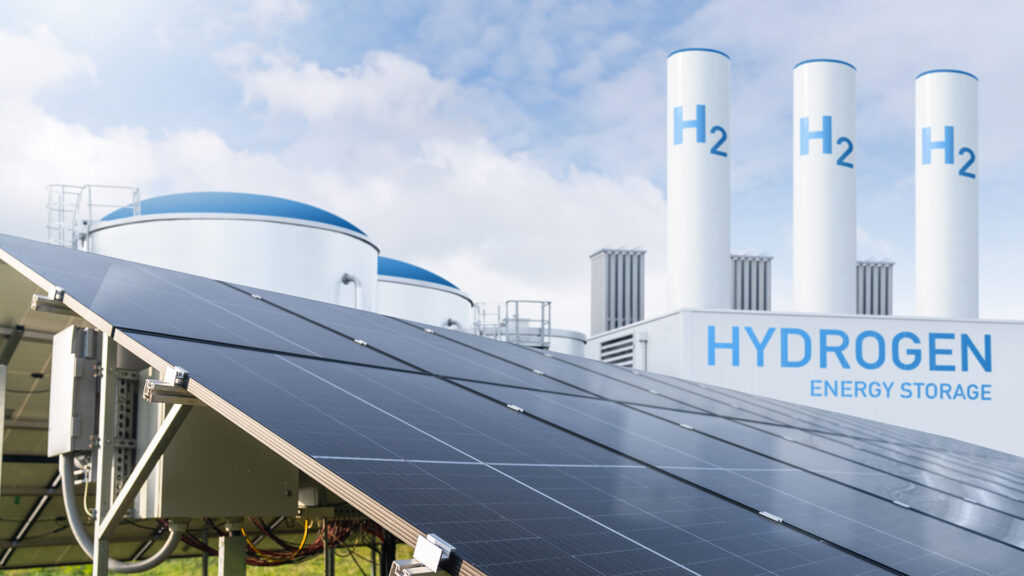Jorgo Chatzimarkakis, CEO of European Hydrogen, explains the recent results of European hydrogen bank auctions and what it means for the European hydrogen sector.
At the end of May 2025, the European Commission announced the results of its second European Hydrogen Bank (EHB) auction. A total of 992 million euros of public funds have been awarded to 15 renewable hydrogen projects. This is expected to produce 2.2 million tons of hydrogen over the next 10 years, avoiding approximately 15 million tons of Co2 emissions. The announcement represents more than just a headline worthy of someone. The EU shows that it is beginning to convert its hydrogen ambitions into real investments, indicating its placement of climate targets, energy resilience, and industrial competitiveness on harder ground.
The results show a clear evolution of the geographical and sectoral distribution of the project. Spain leads in eight selected projects, but Germany and the Netherlands are making their first appearance, suggesting a potentially large willingness as these countries have increased their appetite to invest or pay for renewable hydrogen. Finland is also represented, and Norway was awarded all three maritime projects. Each project received funding ranging from 8 million to 246 million euros over a decade, depending on the size, complexity and predicted power.
Low Premium
One of the most discussed features at the auction is the low premium level that most of the winning general projects have requested, below 0.50 euros per hydrogen. This number coincides with bids from the first auction held in April 2024, but must be interpreted with caution. It could indicate an increased sector experience and efficiency, a high level of competition among project developers, and a limited financial environment available.
Hydrogen in the Maritime Sector
At the sea window, the grants were significantly higher, reaching up to 1.88 euros per kilogram. This closely reflects the true level of support required in the capital-intensive shipping sector when technology is low, infrastructure is scarce and operational challenges are high. Hydrogen-based fuel alternatives continue to be one of the most efficient decarbonisation paths for the maritime sector, but large investments need to be available. Encouraged, these bids are in line with what is needed to make production projects viable, especially as the International Maritime Organization (IMO) continues to raise climate ambitions and seek to adopt low-emission fuels.
But while the direction is promising, the use of hydrogen-based fuels in the maritime sector remains not far from large banks. There is still a huge gap between policy and regulatory ambitions, technology preparation, and the economic certainty that investors need. To turn these early stage projects into true market transformation, projects need to move forward, clearer regulations, stronger demand signals and ongoing public support.
Expansion of the European hydrogen sector
Once all selected projects from the second auction reach the final investment decision (FID), Europe’s committed electrolyzer capacity could increase from 2.7 GW to near 5 GW. While scale may not be as close to what it needs to achieve the EU’s 2030 climate targets, it shows that hydrogen banks can play a meaningful role in accelerating their deployment. Its long-term potential depends on how its impact is reduced and supported in a broader policy and investment context, and whether it will become part of a more consistent, long-term policy framework.
But this is beyond the number of funding. Hydrogen Bank represents a new model of EU industrial policy, which places decarbonization, energy resilience and economic competitiveness on a levelled footing. This is not just about achieving emissions targets. This is to ensure that European industries are ahead of the global competition and expand clean technology.
Auction service
One of the remarkable strengths of the European hydrogen banking framework is the new “service as an auction” model. Unlike EU-level auctions, this mechanism is designed to complement them by allowing the central government to organize its own hydrogen auctions under a harmonious EU support structure supported by EU-level coordination. By providing common guidelines, evaluation criteria and technical support, this model helps streamline how auctions are held across member countries. This brings structure by lowering design consistency, transparency through sharing rules and open competition, and lowering entry barriers and encouraging more project developers to participate under clear and predictable conditions. This is a step towards a more coherent and efficient European hydrogen support system.

Through major European hydrogen bank auctions, fixed premiums per kilogram of renewable hydrogen generated help to reduce the cost gap between green hydrogen and its fossil-based counterparts. This core mechanism of EHB provides EU-level support directly to early stage projects, not to be confused with the complementary auction model as a service. Send a clear signal. If public funds are well targeted, they can reduce production costs and bring the project closer to viability. This is not a blank check, but a carefully designed incentive to generate the most needed momentum.
Resilience standards
Another important evolution introduced in the next third auction is the addition of a resilience standard aimed at strengthening European strategic autonomy. Specifically, to meet the resilience threshold, the project must ensure that it is below 25% of the electrical agent stack capacity (measured with Megawatts Electrical) [Mwe]) – Includes surface treatment, cell unit production, stack assembly – sourced from China. This requirement reflects the growing concerns of the EU regarding excessive reliance on a single supplier country given China’s current dominance in the manufacture of global electrolyzers. This is just the first step, but it shows a deliberate move to promote diversification of the supply chain. Additionally, compliance with European and international safety and cybersecurity standards is mandatory, enhancing quality and operational security. These standards represent more than technical requirements. It is also acknowledged that European hydrogen strategies must support industry resilience and promote domestic and alliance manufacturing in critical technologies.
Commercial Growth
The auction results also revealed indications of encouragement for commercial maturation. Several winning projects report progress in key factors in securing off-take contracts and identifying electrolyzer suppliers, achieving final investment decisions and attracting funding. For example, ENBW’s Fuera Project in Norway was awarded at the first hydrogen bank pilot auction, but in 2027 it secured an off-take contract with ENBW with 100,000 tonnes of green ammonia each year. DH2’s 35 MW Green Hydrogen Facility. Examples of these projects illustrate not only theoretical capabilities but also real-world commercial arrangements and supply chain partnerships. They show that hydrogen deployment has become a grounded ecosystem for producers, offtakers and technology providers, setting a stronger foundation for investment and implementation. These developments show that hydrogen deployment is to establish real-world connections between producers, consumers and technology providers.
Reflection and future planning
Looking back at the second European Hydrogen Bank auction, the project was awarded in May 2025. The only remaining step in this cycle is signing a grant agreement expected by October 2025. In parallel, preparations for the third auction are already underway. A call for feedback on the terms is expected in August 2025, and finalised in early fall. The third auction is scheduled to officially open in December 2025, with results expected in the second quarter of 2026. Project developers must begin preparing the document in advance to meet the deadline for this next call.
Some questions deserve careful attention. First of all, how many winning projects are there that are currently available to achieve a final investment decision? Second, future auctions should include more target baskets for sectors such as aviation and steel. Third, the cumulative rules limit the accumulation of various forms of public assistance – did they block potential applicants? And fourth, is the current 8% completed bonds sufficient to block speculative bids and secure follow-throughs?
Hydrogen banks do not exist on their own. Its future relates to the broader landscape of Europe’s industrial decarbonization policy. Future industrial decarbonization accelerators are expected to provide greater detail support to the lead market across the energy-intensive sector. Meanwhile, the Industrial Decarburization Bank, which is set to launch in 2026, will likely become a central platform for finance to align strategic industrial goals. Together, these equipment could transform the deployment of hydrogen from project-by-project efforts to a more coordinated ecosystem.
All of this is unfolding within a global context where competition is growing. Countries like China are far ahead of the production of electrolyzers and project deployments. Others, such as Japan, Chile and Australia, are also rapidly expanding their hydrogen strategies. Europe is a leader in setting ambitious goals and designing innovative support mechanisms. However, compared to some international peers, EU funding remains relatively limited. To maintain leadership and shape the global hydrogen economy, Europe needs to align its policy ambitions with large-scale long-term investments.
Hydrogen Europe will congratulate members whose project was selected at the second auction. But not just a celebration, this is a moment of critical reflection and a new commitment. Hydrogen Bank shows that public support can bring projects to the edge of realization when well structured. However, success does not come from only a few auctions. What is needed now is a long-term visibility, industry coordination, and a financing situation that reflects both the urgency and scale of the challenges.
The transition to a clean energy economy does not occur with ambition alone. Structure, investment and political clarity are required. This latest auction has put Europe on another strong step in the right direction.
Now is the time to continue to put pressure on – and we promote the future with hydrogen!
This article will also be featured in the 23rd edition of Quarterly Publication.
Source link

